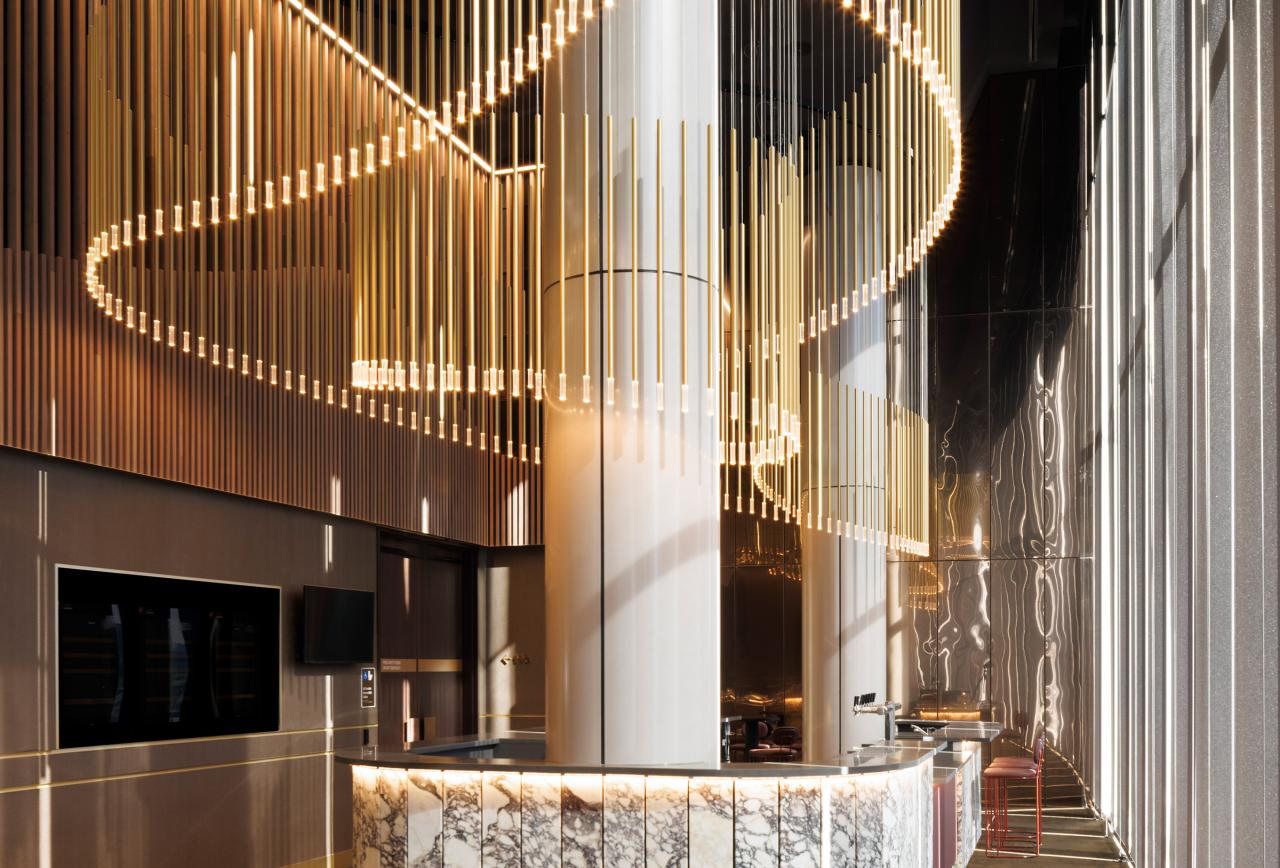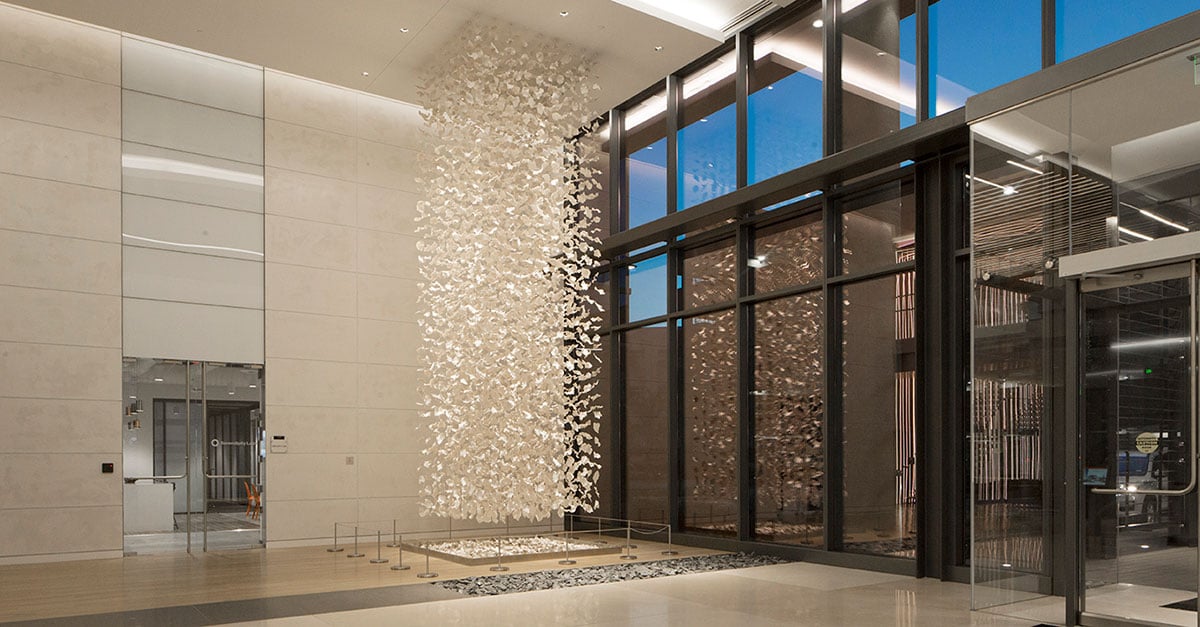Architectural lighting design is a critical element in shaping the ambiance and functionality of built environments. Beyond mere illumination, it influences mood, highlights architectural features, and enhances the overall aesthetic appeal of spaces. This comprehensive guide delves into the principles, techniques, and emerging trends in architectural lighting, illustrating how thoughtful lighting design can transform buildings into captivating and functional spaces.
A. The Essence of Architectural Lighting
1. Defining Architectural Lighting
Architectural lighting refers to the integration of light within the architecture of a space, aiming to enhance the building’s design and functionality. It encompasses both natural and artificial lighting, strategically applied to accentuate structural elements, create ambiance, and ensure adequate illumination for various activities.
2. Importance in Design
Effective architectural lighting:
-
A. Enhances Aesthetics: Highlights textures, colors, and forms, adding depth and interest.
-
B. Influences Mood: Creates atmospheres ranging from tranquil to dynamic, affecting occupants’ emotions.
-
C. Improves Functionality: Ensures spaces are adequately lit for their intended purposes.
-
D. Increases Safety: Illuminates pathways and reduces hazards.
-
E. Promotes Energy Efficiency: Utilizes lighting systems that reduce energy consumption.
B. Core Principles of Lighting Design
1. Layered Lighting Approach
A well-designed lighting scheme incorporates multiple layers:
-
A. Ambient Lighting: Provides overall illumination, setting the general tone of the space.
-
B. Task Lighting: Focused lighting for specific activities like reading or cooking.
-
C. Accent Lighting: Highlights architectural features or artworks.
-
D. Decorative Lighting: Adds visual interest and complements the design theme.
-
E. Natural Lighting: Harnesses daylight to reduce reliance on artificial lighting.
Combining these layers creates a dynamic and adaptable lighting environment.
2. Color Temperature and Rendering
Understanding color temperature (measured in Kelvin) is vital:
-
A. Warm Light (2700K–3000K): Creates cozy, inviting atmospheres.
-
B. Neutral Light (3500K–4100K): Balances warmth and coolness, suitable for workspaces.
-
C. Cool Light (5000K–6500K): Mimics daylight, enhancing concentration and alertness.
High Color Rendering Index (CRI) values ensure accurate color representation, crucial in settings like galleries or retail spaces.
C. Techniques in Architectural Lighting
1. Uplighting and Downlighting
-
A. Uplighting: Directs light upwards, emphasizing ceilings and creating a sense of height.
-
B. Downlighting: Focuses light downward, commonly used for general illumination.
Balancing both techniques can add depth and dimension to a space.
2. Grazing and Wall Washing
-
A. Grazing: Positions light close to a textured surface, accentuating its details.
-
B. Wall Washing: Evenly illuminates flat surfaces, making spaces appear larger and more open.
3. Silhouetting and Backlighting
-
A. Silhouetting: Places light behind an object, creating a dramatic outline.
-
B. Backlighting: Illuminates translucent materials from behind, enhancing their visual appeal.
D. Emerging Trends in Architectural Lighting
1. Human-Centric Lighting
Designs that align with human circadian rhythms, adjusting light intensity and color temperature throughout the day to promote well-being and productivity.
2. Smart Lighting Systems
Integration of technology allows for automated and remote control of lighting, enabling customization and energy savings.
3. Sustainable Lighting Solutions
Emphasis on energy-efficient fixtures, use of renewable energy sources, and materials that reduce environmental impact.
4. Biophilic Design Integration
Incorporating natural elements and patterns into lighting design to foster a connection with nature, enhancing comfort and reducing stress.

E. Case Studies: Transformative Lighting Applications
1. Commercial Spaces
In office environments, dynamic lighting systems that adjust throughout the day can boost employee morale and efficiency.
2. Hospitality Industry
Hotels and restaurants utilize layered lighting to create inviting atmospheres, guiding guests through different zones and enhancing the dining experience.
3. Residential Settings
Homeowners employ a mix of ambient, task, and accent lighting to create comfortable and functional living spaces.
F. Best Practices in Lighting Design
-
A. Early Integration: Incorporate lighting design in the initial stages of architectural planning.
-
B. Collaboration: Work closely with architects, interior designers, and engineers for cohesive outcomes.
-
C. User-Centric Approach: Consider the needs and behaviors of occupants to tailor lighting solutions.
-
D. Flexibility: Design adaptable systems that can evolve with changing requirements.
-
E. Compliance: Ensure adherence to local regulations and standards for safety and efficiency.
Architectural lighting is a powerful tool that shapes the way we experience built environments. By thoughtfully applying lighting principles and embracing emerging trends, designers can create spaces that are not only visually stunning but also enhance functionality and well-being. As technology advances and our understanding of human-centric design deepens, the role of lighting in architecture will continue to evolve, offering endless possibilities for innovation and expression.v











